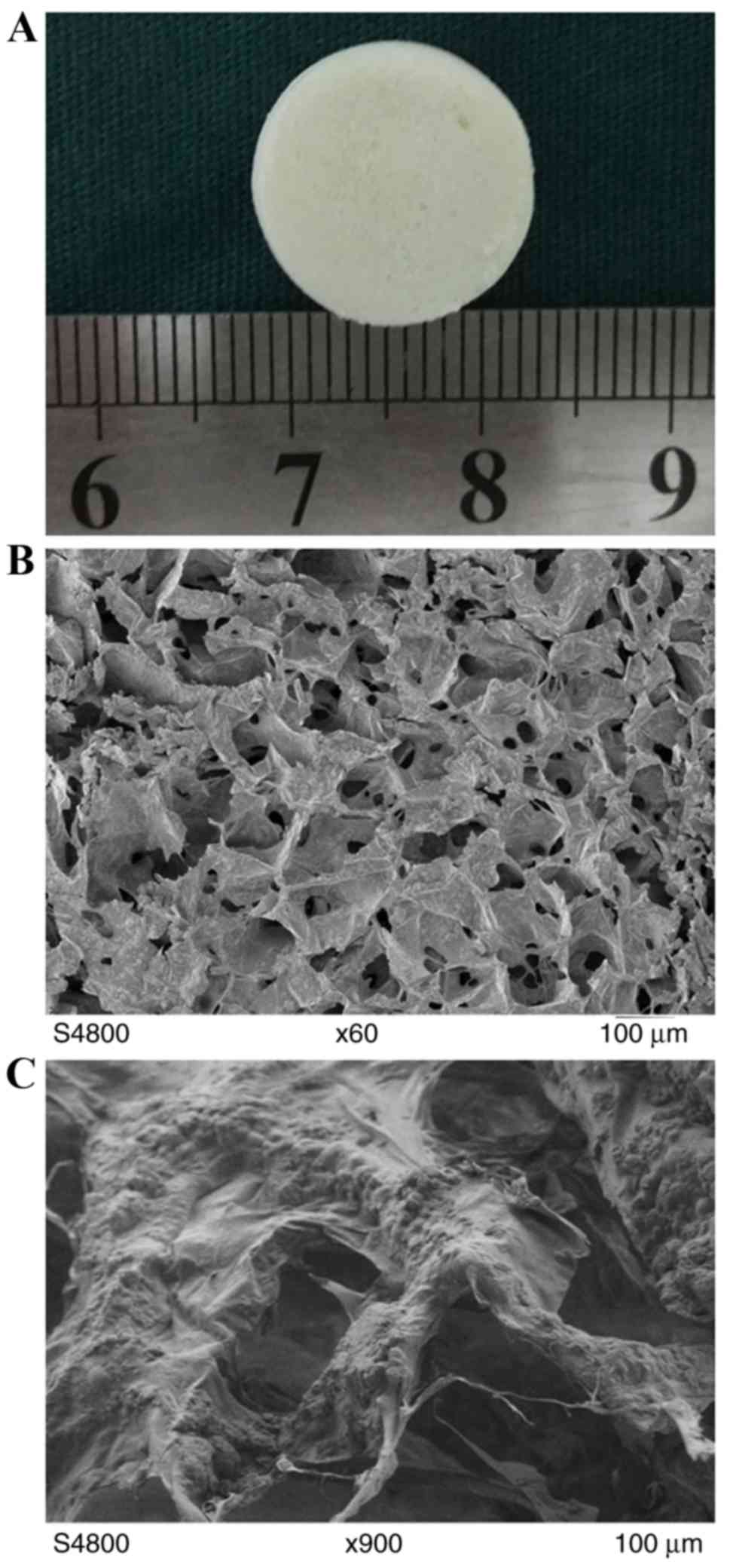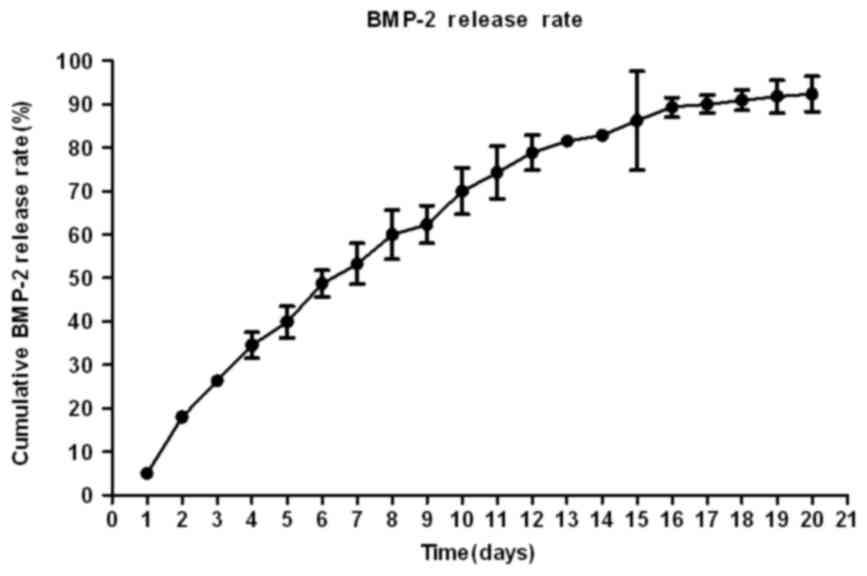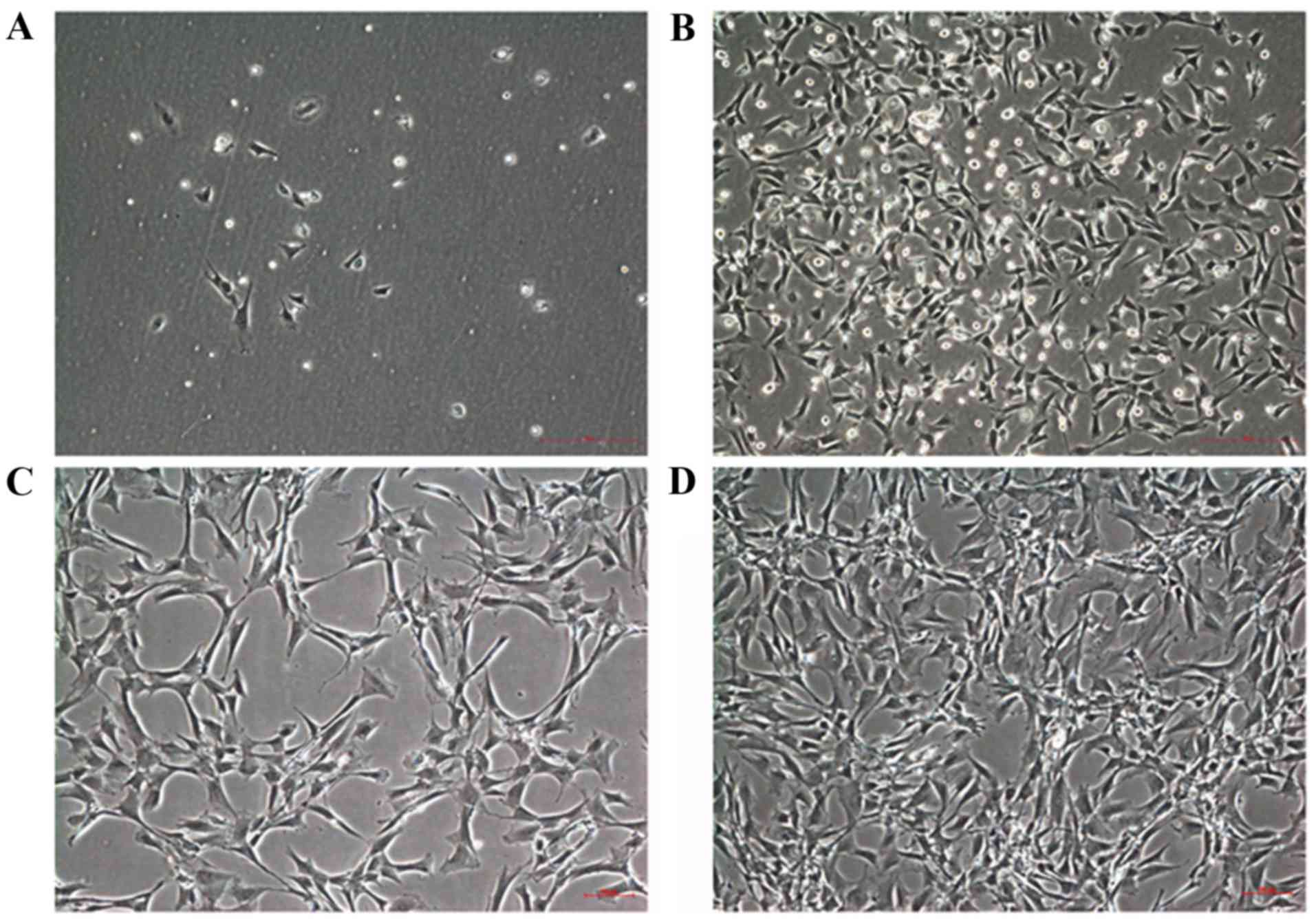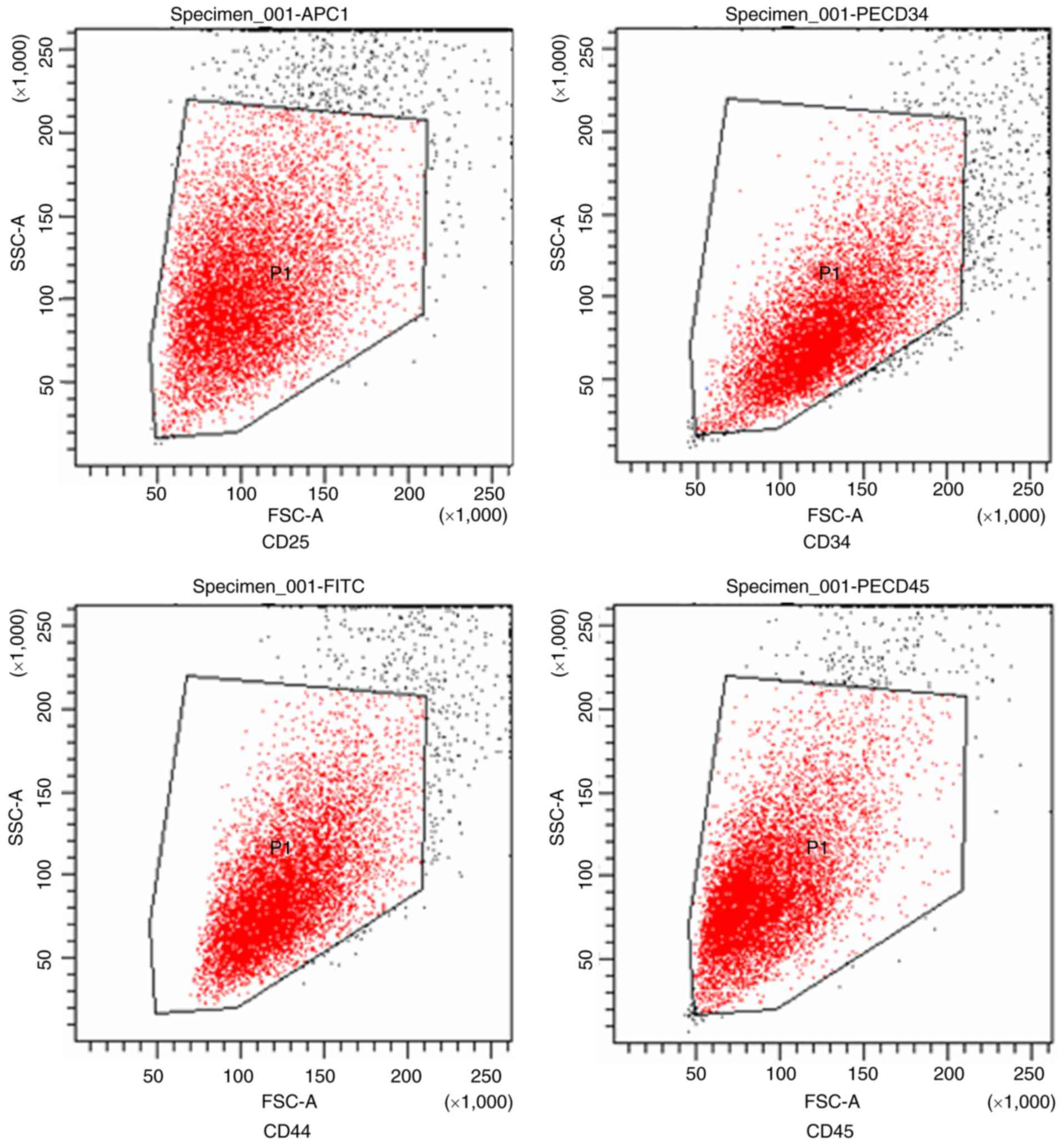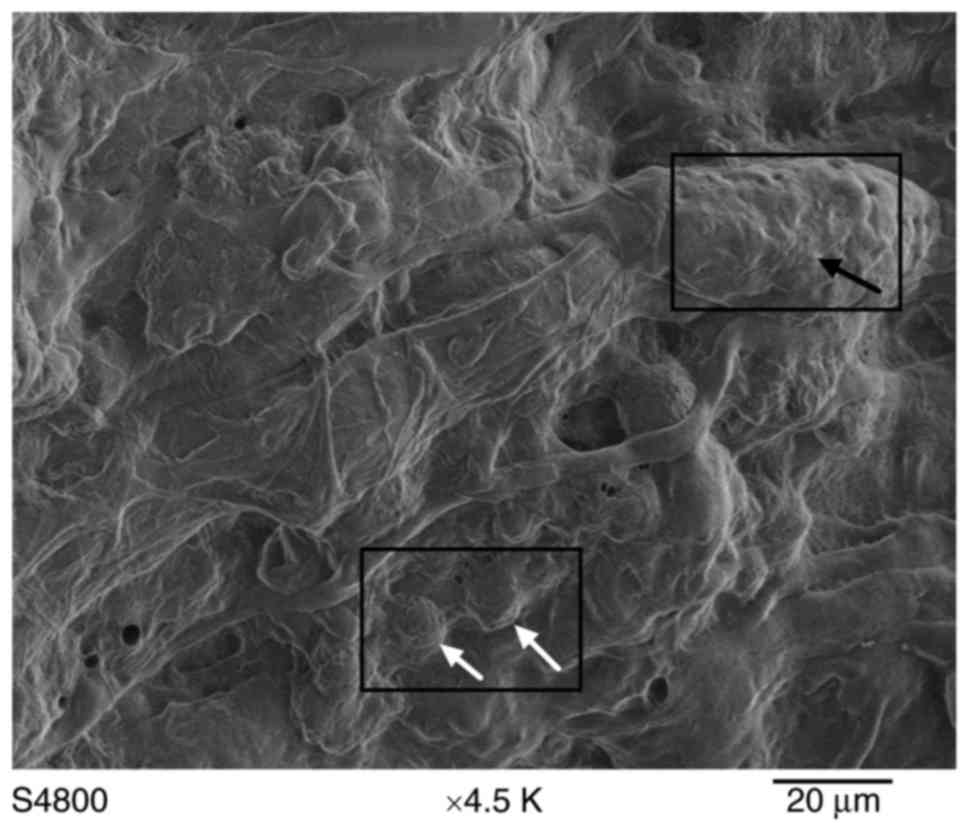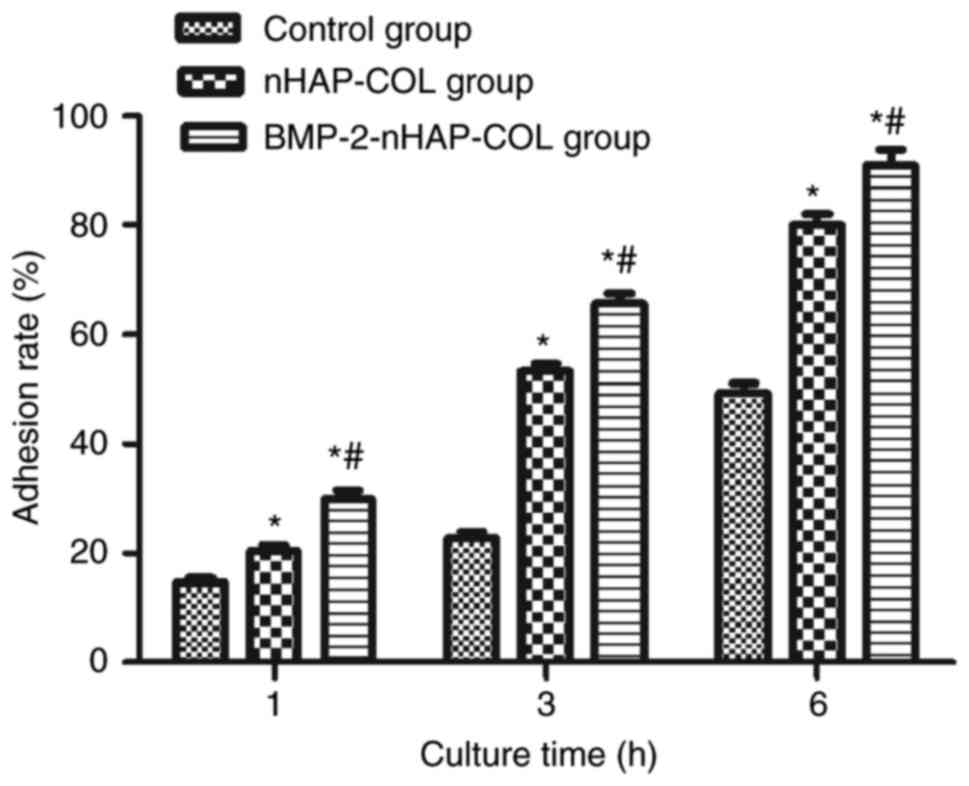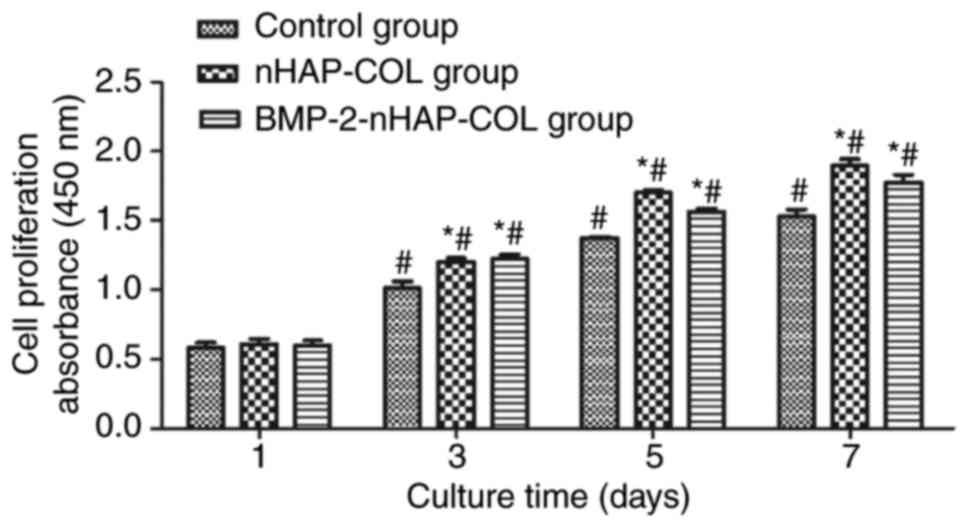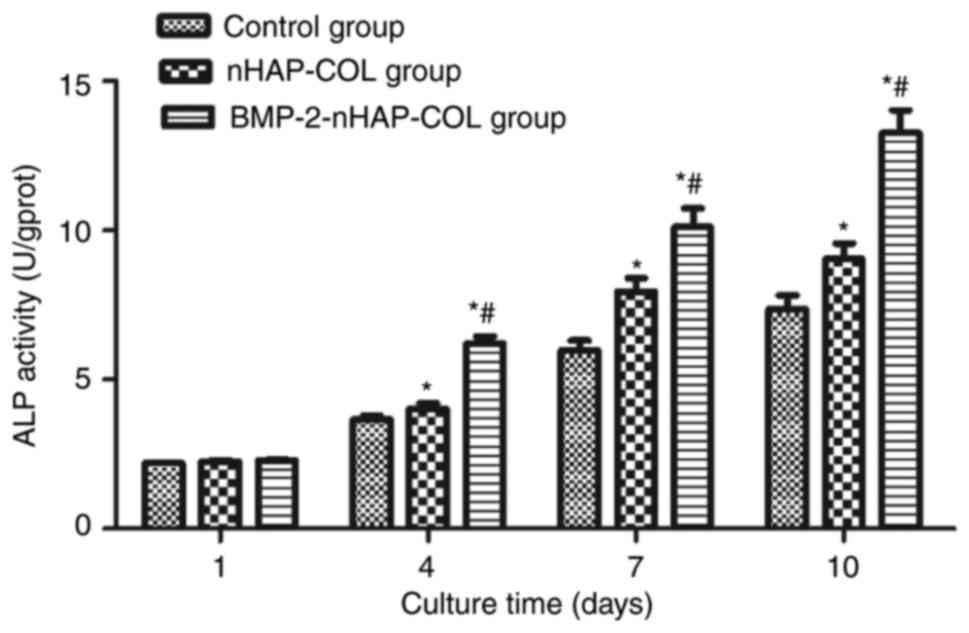|
1
|
Zhou H and Xu HH: The fast release of stem
cells from alginate-fibrin microbeads in injectable scaffolds for
bone tissue engineering. Biomaterials. 32:7503–7513. 2011.
View Article : Google Scholar : PubMed/NCBI
|
|
2
|
Mao JJ, Vunjak-Novakovic G, Mikos AG and
Atala A: Regenerative medicine: Translational approaches and tissue
engineering. Artech House; Boston, MA: 2007
|
|
3
|
Boccaccio A, Ballini A, Pappalettere C,
Tullo D, Cantore S and Desiate A: Finite element method (FEM),
mechanobiology and biomimetic scaffolds in bone tissue engineering.
Int J Biol Sci. 7:112–132. 2011. View Article : Google Scholar : PubMed/NCBI
|
|
4
|
Liu X and Ma PX: Polymeric scaffolds for
bone tissue engineering. Ann Biomed Eng. 32:477–486. 2004.
View Article : Google Scholar : PubMed/NCBI
|
|
5
|
Ma L, Gao C, Mao Z, Zhou J and Shen J:
Biodegradability and cell-mediated contraction of porous collagen
scaffolds: The effect of lysine as a novel crosslinking bridge. J
Biomed Mater Res A. 71:334–342. 2004. View Article : Google Scholar : PubMed/NCBI
|
|
6
|
Harley BA, Leung JH, Silva EC and Gibson
LJ: Mechanical characterization of collagen-glycosaminoglycan
scaffolds. Acta Biomater. 3:463–474. 2007. View Article : Google Scholar : PubMed/NCBI
|
|
7
|
Ikada Y: Challenges in tissue engineering.
J R Soc Interface. 3:589–601. 2006. View Article : Google Scholar : PubMed/NCBI
|
|
8
|
Appleford MR, Oh S, Oh N and Ong JL: In
vivo study on hydroxyapatite scaffolds with trabecular architecture
for bone repair. J Biomed Mater Res A. 89:1019–1027. 2009.
View Article : Google Scholar : PubMed/NCBI
|
|
9
|
Karageorgiou V and Kaplan D: Porosity of
3D biomaterial scaffolds and osteogenesis. Biomaterials.
26:5474–5491. 2005. View Article : Google Scholar : PubMed/NCBI
|
|
10
|
King WJ and Krebsbach PH: Growth factor
delivery: How surface interactions modulate release in vitro and in
vivo. Adv Drug Deliv Rev. 64:1239–1256. 2012. View Article : Google Scholar : PubMed/NCBI
|
|
11
|
Hatakeyama W, Taira M, Chosa N, Kihara H,
Ishisaki A and Kondo H: Effects of apatite particle size in two
apatite/collagen composites on the osteogenic differentiation
profile of osteoblastic cells. Int J Mol Med. 32:1255–1261. 2013.
View Article : Google Scholar : PubMed/NCBI
|
|
12
|
Feng P, Niu M, Gao C, Peng S and Shuai C:
A novel two-step sintering for nano-hydroxyapatite scaffolds for
bone tissue engineering. Sci Rep. 4:55992014. View Article : Google Scholar : PubMed/NCBI
|
|
13
|
He Y, Dong Y, Cui F, Chen X and Lin R:
Ectopic osteogenesis and scaffold biodegradation of
nano-hydroxyapatite-chitosan in a rat model. PLoS One.
10:e01353662015. View Article : Google Scholar : PubMed/NCBI
|
|
14
|
Hu J, Zhou Y, Huang L, Liu J and Lu H:
Effect of nano-hydroxyapatite coating on the osteoinductivity of
porous biphasic calcium phosphate ceramics. BMC Musculoskelet
Disord. 15:1142014. View Article : Google Scholar : PubMed/NCBI
|
|
15
|
Nukavarapu SP, Kumbar SG, Brown JL,
Krogman NR, Weikel AL, Hindenlang MD, Nair LS, Allcock HR and
Laurencin CT: Polyphosphazene/nano-hydroxyapatite composite
microsphere scaffolds for bone tissue engineering.
Biomacromolecules. 9:1818–1825. 2008. View Article : Google Scholar : PubMed/NCBI
|
|
16
|
Ganesh N, Ashokan A, Rajeshkannan R,
Chennazhi K, Koyakutty M and Nair SV: Magnetic resonance functional
nano-hydroxyapatite incorporated poly (caprolactone) composite
scaffolds for in situ monitoring of bone tissue regeneration by
MRI. Tissue Eng Part A. 20:2783–2794. 2014. View Article : Google Scholar : PubMed/NCBI
|
|
17
|
Vanhatupa S, Ojansivu M, Autio R, Juntunen
M and Miettinen S: Bone morphogenetic protein-2 induces
donor-dependent osteogenic and adipogenic differentiation in human
adipose stem cells. Stem Cells Transl Med. 4:1391–1402. 2015.
View Article : Google Scholar : PubMed/NCBI
|
|
18
|
Wang YK, Yu X, Cohen DM, Wozniak MA, Yang
MT, Gao L, Eyckmans J and Chen CS: Bone morphogenetic
protein-2-induced signaling and osteogenesis is regulated by cell
shape, RhoA/ROCK and cytoskeletal tension. Stem Cells Dev.
21:1176–1186. 2012. View Article : Google Scholar : PubMed/NCBI
|
|
19
|
Castro-Govea Y, Cervantes-Kardasch VH,
Borrego-Soto G, Martínez-Rodríguez HG, Espinoza-Juarez M,
Romero-Díaz V, Marino-Martínez IA, Robles-Zamora A, Álvarez-Lozano
E, Padilla-Rivas GR, et al: Human bone morphogenetic protein
2-transduced mesenchymal stem cells improve bone regeneration in a
model of mandible distraction surgery. J Craniofac Surg.
23:392–396. 2012. View Article : Google Scholar : PubMed/NCBI
|
|
20
|
Vilquin JT and Rosset P: Mesenchymal stem
cells in bone and cartilage repair: Current status. Regen Med.
1:589–604. 2006. View Article : Google Scholar : PubMed/NCBI
|
|
21
|
Fujioka-Kobayashi M, Sawada K, Kobayashi
E, Schaller B, Zhang Y and Miron RJ: Recombinant human bone
morphogenetic protein 9 (rhBMP9) induced osteoblastic behavior on a
collagen membrane compared with rhBMP2. J Periodontol.
87:e101–e107. 2016. View Article : Google Scholar : PubMed/NCBI
|
|
22
|
Su J, Xu H, Sun J, Gong X and Zhao H: Dual
delivery of BMP-2 and bFGF from a new nano-composite scaffold,
loaded with vascular stents for large-size mandibular defect
regeneration. Int J Mol Sci. 14:12714–12728. 2013. View Article : Google Scholar : PubMed/NCBI
|
|
23
|
Song K, Huang M, Shi Q, Du T and Cao Y:
Cultivation and identification of rat bone marrow-derived
mesenchymal stem cells. Mol Med Rep. 10:755–760. 2014. View Article : Google Scholar : PubMed/NCBI
|
|
24
|
Tong S, Xue L, Xu DP, Liu ZM, Du Y and
Wang XK: In vitro culture of hFOB1.19 osteoblast cells on
TGF-β1-SF-CS three dimensional scaffolds. Mol Med Rep. 13:181–187.
2016. View Article : Google Scholar : PubMed/NCBI
|
|
25
|
Wang Z, Lin M, Xie Q, Sun H, Huang Y,
Zhang D, Yu Z, Bi X, Chen J, Wang J, et al: Electrospun silk
fibroin/poly (lactide-co-ε-caprolactone) nanofibrous scaffolds for
bone regeneration. Int J NanoMedicine. 11:1483–1500.
2016.PubMed/NCBI
|
|
26
|
Zhang H, Ma X, Zhang L, Guan X, Bai T and
Xue C: The ability to form cartilage of NPMSC and BMSC in SD rats.
Int J Clin Exp Med. 8:4989–4996. 2015.PubMed/NCBI
|
|
27
|
Gao P, Zhang H, Liu Y, Fan B, Li X, Xiao
X, Lan P, Li M, Geng L, Liu D, et al: Beta-tricalcium phosphate
granules improve osteogenesis in vitro and establish innovative
osteo-regenerators for bone tissue engineering in vivo. Sci Rep.
6:233672016. View Article : Google Scholar : PubMed/NCBI
|
|
28
|
Chan EC, Kuo SM, Kong AM, Morrison WA,
Dusting GJ, Mitchell GM, Lim SY and Liu GS: Three Dimensional
Collagen Scaffold Promotes Intrinsic Vascularisation for Tissue
Engineering Applications. PLoS One. 11:e01497992016. View Article : Google Scholar : PubMed/NCBI
|
|
29
|
Xu C, Lu W, Bian S, Liang J, Fan Y and
Zhang X: Porous collagen scaffold reinforced with surfaced
activated PLLA nanoparticles. Scientific World Journal.
2012:6951372012. View Article : Google Scholar : PubMed/NCBI
|
|
30
|
Lee MJ, Sohn SK, Kim KT, Kim CH, Ahn HB,
Rho MS, Jeong MH and Sun SK: Effect of hydroxyapatite on bone
integration in a rabbit tibial defect model. Clin Orthop Surg.
2:90–97. 2010. View Article : Google Scholar : PubMed/NCBI
|
|
31
|
Xia Y, Zhou P, Cheng X, Xie Y, Liang C, Li
C and Xu S: Selective laser sintering fabrication of
nano-hydroxyapatite/poly-ε-caprolactone scaffolds for bone tissue
engineering applications. Int J Nanomedicine. 8:4197–4213.
2013.PubMed/NCBI
|
|
32
|
Zeng S, Liu L, Shi Y, Qiu J, Fang W, Rong
M, Guo Z and Gao W: Characterization of silk fibroin/chitosan 3d
porous scaffold and in vitro cytology. PLoS One. 10:e01286582015.
View Article : Google Scholar : PubMed/NCBI
|
|
33
|
Li C, Vepari C, Jin HJ, Kim HJ and Kaplan
DL: Electrospun silk-BMP-2 scaffolds for bone tissue engineering.
Biomaterials. 27:3115–3124. 2006. View Article : Google Scholar : PubMed/NCBI
|
|
34
|
Polo-Corrales L, Latorre-Esteves M and
Ramirez-Vick JE: Scaffold design for bone regeneration. J Nanosci
Nanotechnol. 14:15–56. 2014. View Article : Google Scholar : PubMed/NCBI
|
|
35
|
Wang W: Lyophilization and development of
solid protein pharmaceuticals. Int J Pharm. 203:1–60. 2000.
View Article : Google Scholar : PubMed/NCBI
|



